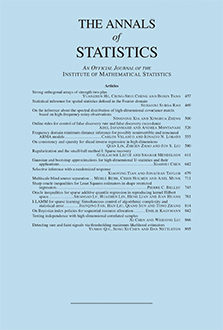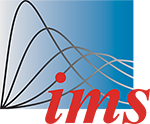Abstract
Many complex networks in the real world can be formulated as hypergraphs where community detection has been widely used. However, the fundamental question of whether communities exist or not in an observed hypergraph remains unclear. This work aims to tackle this important problem. Specifically, we systematically study when a hypergraph with community structure can be successfully distinguished from its Erdős–Rényi counterpart, and propose concrete test statistics when the models are distinguishable. The main contribution of this paper is threefold. First, we discover a phase transition in the hyperedge probability for distinguishability. Second, in the bounded-degree regime, we derive a sharp signal-to-noise ratio (SNR) threshold for distinguishability in the special two-community 3-uniform hypergraphs, and derive nearly tight SNR thresholds in the general two-community m-uniform hypergraphs. Third, in the dense regime, we propose a computationally feasible test based on sub-hypergraph counts, obtain its asymptotic distribution, and analyze its power. Our results are further extended to nonuniform hypergraphs in which a new test involving both edge and hyperedge information is proposed. The proofs rely on Janson’s contiguity theory (Combin. Probab. Comput. 4 (1995) 369–405), a high-moments driven asymptotic normality result by Gao and Wormald (Probab. Theory Related Fields 130 (2004) 368–376), and a truncation technique for analyzing the likelihood ratio.
Funding Statement
The third author was supported by NSF CAREER Grant DMS-2013789. The fourth author was supported by NSF Grants DMS-1764280 and DMS-1821157.
Acknowledgement
We are grateful to the co-Editor Professor Richard Samworth, the Associate Editor, and referees for their insightful comments which greatly improved the quality and scope of the paper. We thank Sumit Mukherjee for suggesting the truncation technique which motivates Theorem 2.6.
Citation
Mingao Yuan. Ruiqi Liu. Yang Feng. Zuofeng Shang. "Testing community structure for hypergraphs." Ann. Statist. 50 (1) 147 - 169, February 2022. https://doi.org/10.1214/21-AOS2099
Information





